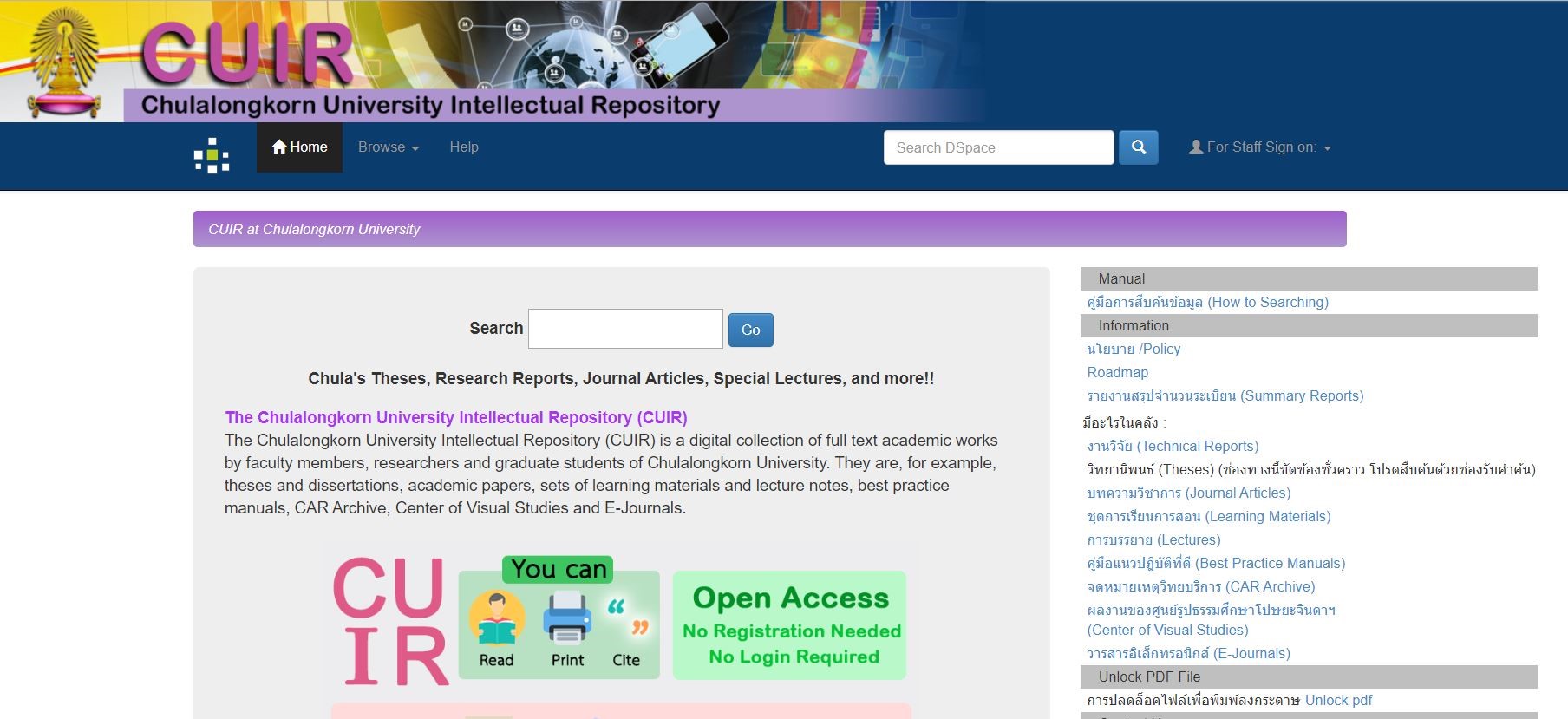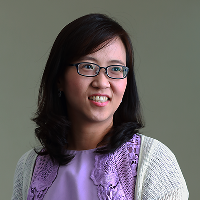Wachiraporn Klungthanaboon is Lecturer at the Department of Library Science at Chulalongkorn University in Thailand
About 10 years ago, the idea of collocating and providing digital research outputs through an institutional repository or a subject repository for online access was introduced to Thailand. For example, the Library at Chulalongkorn University had built its institutional repository named “CUIR - Chulalongkorn University Intellectual Repositories”. The CUIR has been developed gradually through time in order to serve our users’ information behavior in terms of the increasing number of research outputs, extended collection coverage, and more open access.

Chulalongkorn University Intellectual Repository (https://cuir.car.chula.ac.th/)
At the initial stage, CUIR’s collection was very small and could acquire only student’s research outputs - theses. In term of services, only the university community members could access the full-text theses whereas the public could access only abstracts. So it could be said that at the beginning some stakeholder groups might not perceive the benefits of the institutional repository and the idea “open access”. However, the concept of “Open Access” has gradually been adopted and understood better more.
It could be said that the CUIR has received awareness and engagement from the university community members. The Library could collect and provide access to all postgraduate students’ digital research outputs with enriched metadata. In addition, more university members have perceived the benefits of the CUIR and have given their research outputs to the library for digitization and the public use via the CUIR. Moreover, it allows the public to access and download the full text of digital research outputs without registration and required login. This successful development could not happen without the policy support from the Graduate School and the administrative board.
However, the issue “digital preservation” becomes more challenging in order to sustain the repository and build trust among the community members. It could be said that the CUIR collections, especially e-theses collection, are comprehensive because the mandate policy is taken at the place. Next, the library should prepare for preserving digital resources deposited into the CUIR for long-term access. How does the library assure that these digital objects could be available and accessible in the long term? Actually, the digital preservation plan should be made and launched before building the repository. However, it is never too late to make a digital preservation plan right now. Backing up all digital objects may not be enough. Rechecking the quality of digital files, embedding metadata into the files, and converting file formats if necessary should be taken into consideration and practice. Besides, working align with international standards on trustworthy repositories should be considered in order to assure the trustworthiness of the repository in terms of long-term availability and accessibility.
Nowadays, data are currently an integral part of the research in scholarly communication. Research funders, publishers, and institutions across the globe attempt to make research data available, accessible, and reusable through data repositories. How is about Thai scholarly community? The library at Chulalongkorn University is aware of the significance of research data and the research data service provision. However, at present the library at Chulalongkorn University does not develop a research data repository yet. However, it does not mean that we ignore the importance of research data and the development of research data repository.
In my opinion, we are investigating to gain more understanding of research data and data repository in various disciplines across the globe. This may help us to make a feasible plan to step forward. The experiences and learned lessons from managing digital research outputs may contribute to initiate a data repository. Dealing with research data may introduce new challenges and concerns such as sufficient knowledge and skills of information professionals, the sensitivity of data especially human subject data, rights and privacy of individuals, the risk of a confidentiality breach, data licensing, and data publishing. Certainly, the issue of digital preservation should be considered at the primary stage of the project. In my opinion, collaboration among stakeholders, clear communication, and national and institutional policies are needed for driving this project move forward smoothly and effectively.

Read more...